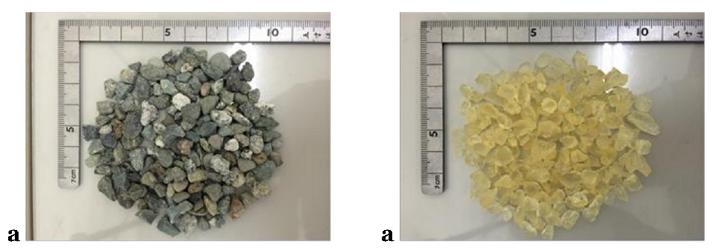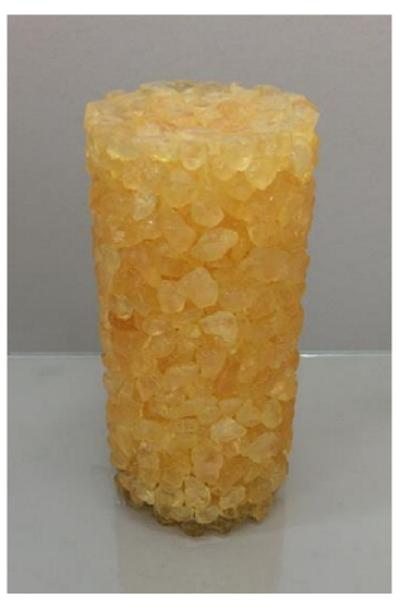 The Port and Airport Research Institute (PARI) was established in Japan in 1946 to conduct comprehensive research related to ports, airports and facilities, particularly as that research relates to coastal and offshore disaster prevention, environment and utilization.
The Port and Airport Research Institute (PARI) was established in Japan in 1946 to conduct comprehensive research related to ports, airports and facilities, particularly as that research relates to coastal and offshore disaster prevention, environment and utilization.
PARI has two main goals: performing innovative research and contributing to practical solutions for actual problems.
 They say the Great East Japan Earthquake of 2011 was a profound shock which has spurred the group to take on long-term research on “disaster mitigation and symbiosis with the sea.” Their environmental research explores ecosystems of tidal flats and integrated management of the Japanese coastal environment, and through projects like “Guidelines for Tsunami-Resistant Design of Breakwaters,” PARI says they have revised technological standards pertaining to the method of evaluating the risk of soil liquefaction.
They say the Great East Japan Earthquake of 2011 was a profound shock which has spurred the group to take on long-term research on “disaster mitigation and symbiosis with the sea.” Their environmental research explores ecosystems of tidal flats and integrated management of the Japanese coastal environment, and through projects like “Guidelines for Tsunami-Resistant Design of Breakwaters,” PARI says they have revised technological standards pertaining to the method of evaluating the risk of soil liquefaction.
Now a team of PARI researchers led by Satoshi Matsumura and Takaaki Mizutani are using 3D printing to evaluate the effect of structure on the mechanical behavior of soil.
The pair say to understand the effect of particle arrangement within soil, they applied a 3D printing technique to soil mechanics and conducted what they called “triaxial compression testing” using natural gravel soil and 3D printed samples for comparison and study.
The team say they confirmed that it is possible to reconstitute samples which have the same structure as that of the originals using 3D printing and CT scanning techniques.
“We concluded that even though the granular sample could be reconstituted at the same packing density, the difference of particle arrangement made the mechanical response vary more widely,” they write of the results.
Their work is among a wide range of projects aimed at revealing changes in mechanical characteristics of soil due to difference of compaction conditions, and they say 3D printing is ideal to recreate those conditions.
 While their engineers have been utilizing 3D printing, it’s the ability of the technology to now handle small spatial scales which makes it possible to re-create the complex, stalactite-like structures encountered in soil. They say these heterogeneous structures can now be printed with a range of materials from plastics to glass to ceramics, which can closely approximate the construction of soils.
While their engineers have been utilizing 3D printing, it’s the ability of the technology to now handle small spatial scales which makes it possible to re-create the complex, stalactite-like structures encountered in soil. They say these heterogeneous structures can now be printed with a range of materials from plastics to glass to ceramics, which can closely approximate the construction of soils.
The work uses micro X-ray CT imaging to quantify soil structure and then replicate “static model microcosms” meant to exhibit the physical characteristics found in soils. They say the soil pore geometries needed for study can be quantified via these X-ray CT images – or even digitally designed – to arrive at the structures. The printed study samples were built with an AGILISTA-3100 DLP Printer from Keyence Corporation.
What do you think of how 3D printing is being applied to various scientific fields of study? Let us know in the 3D Printed Soil forum thread on 3DPB.com.
Subscribe to Our Email Newsletter
Stay up-to-date on all the latest news from the 3D printing industry and receive information and offers from third party vendors.
You May Also Like
Profiling a Construction 3D Printing Pioneer: US Army Corps of Engineers’ Megan Kreiger
The world of construction 3D printing is still so new that the true experts can probably be counted on two hands. Among them is Megan Kreiger, Portfolio Manager of Additive...
US Army Corps of Engineers Taps Lincoln Electric & Eaton for Largest 3D Printed US Civil Works Part
The Soo Locks sit on the US-Canadian border, enabling maritime travel between Lake Superior and Lake Huron, from which ships can reach the rest of the Great Lakes. Crafts carrying...
Construction 3D Printing CEO Reflects on Being Female in Construction
Natalie Wadley, CEO of ChangeMaker3D, could hear the words of her daughter sitting next to her resounding in her head. “Mum, MUM, you’ve won!” Wadley had just won the prestigious...
1Print to Commercialize 3D Printed Coastal Resilience Solutions
1Print, a company that specializes in deploying additive construction (AC) for infrastructure projects, has entered an agreement with the University of Miami (UM) to accelerate commercialization of the SEAHIVE shoreline...





























